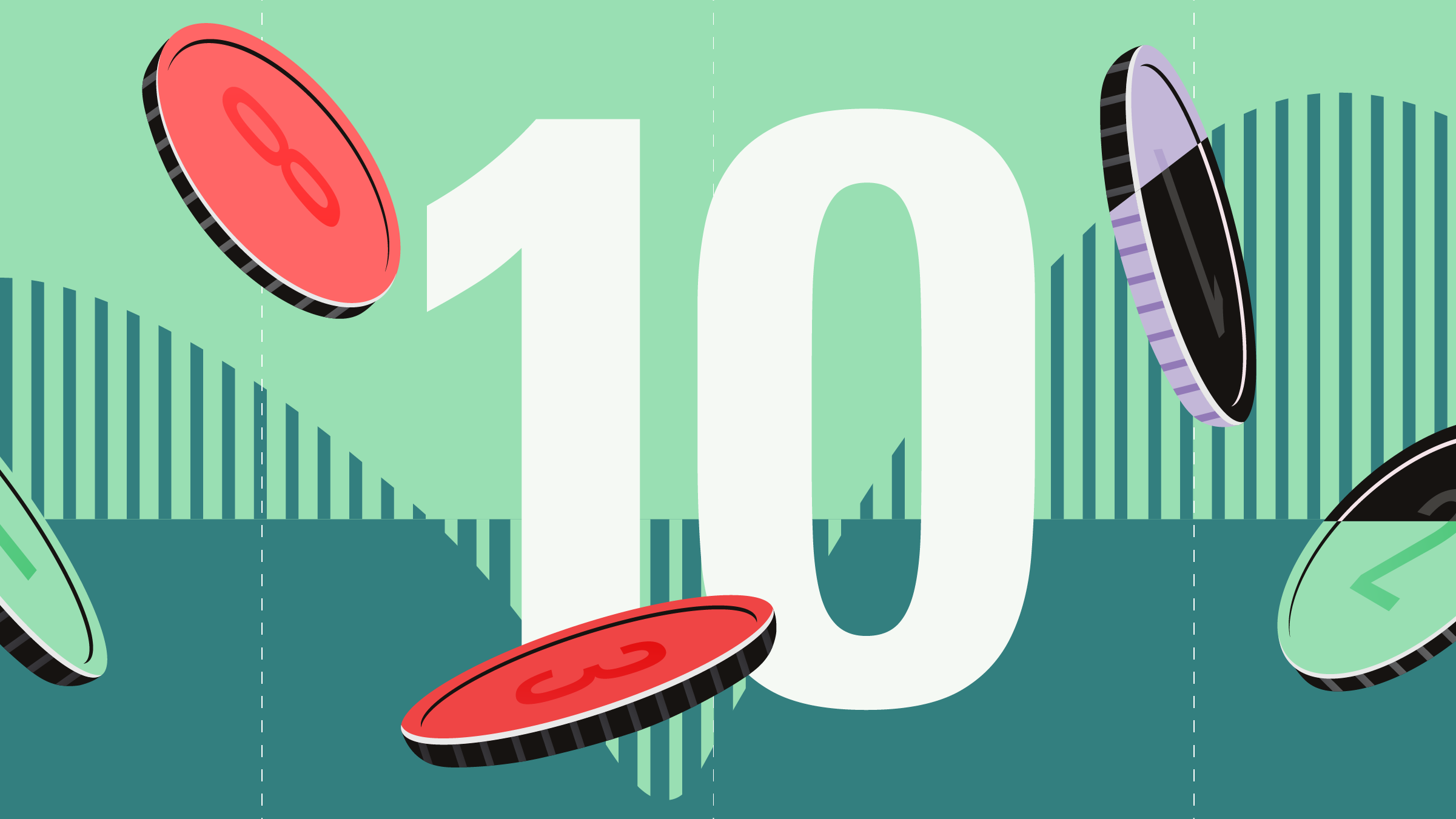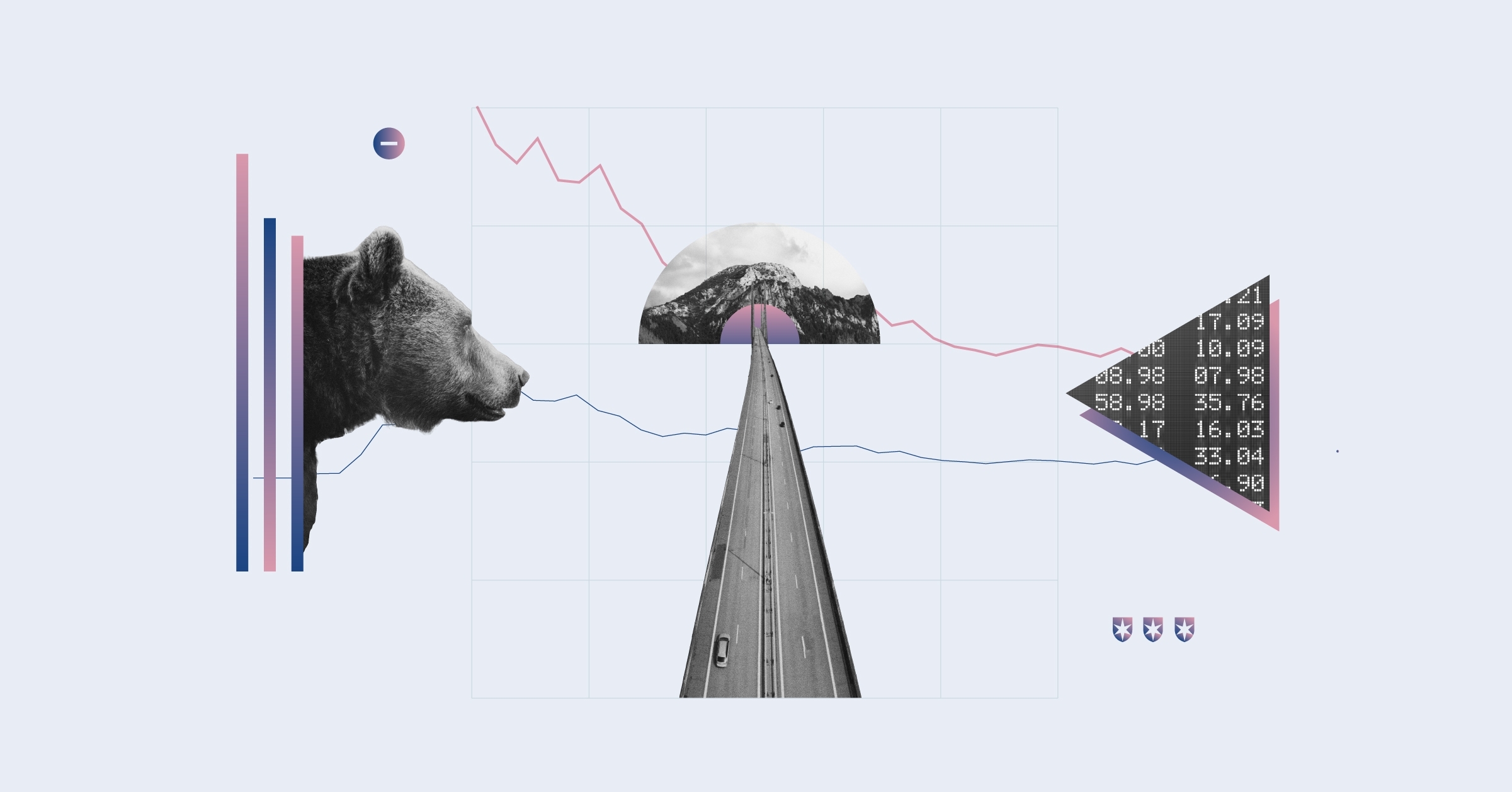This article is part of Morningstar.co.uk's Equity Investing Week.
The most common equity valuation approach involves examining ratios between an equity's market price and an element of the underlying company's performance, whether that be earnings, sales, book value, or something similar. Ratios are very popular with investors because they can be calculated easily, and they are readily available from most financial websites and newspapers.
While valuation ratios have become ubiquitous, it's important to recognise their strengths and weaknesses Valuation ratios are handy tools to have at your disposal for a quick-and-dirty analysis, but they all require a lot of context to be useful.
Below is a review of the most widely used valuation ratios and a discussion on how to incorporate them into your investment research.
Price/Sales (P/S)
One of the most basic valuation ratios is the P/S ratio. The P/S ratio is equal to a share's market price divided by its sales per share.
P/S = (Stock Price) / Sales Per Share
The nice thing about the P/S ratio is that sales are fairly cut-and-dried numbers, not subject to much accounting assumption and manipulation like earnings can be. Although firms could use accounting tricks to lift sales, it's much harder to do and far easier to catch. Moreover, sales are not as volatile as earnings, because one-time charges or gains can depress or boost earnings temporarily. Plus, the bottom line of economically cyclical companies can vary significantly from year to year, but sales are a more stable benchmark. Moreover, the P/S ratio can be used for companies that don't have positive earnings.
The relative smoothness of sales makes the P/S ratio useful for quickly valuing companies with highly variable earnings by comparing their current P/S ratios with historic P/S ratios. The P/S ratio could also be a helpful tool in analysing companies in the same industry, particularly when a firm may have unstable earnings or no earnings at all.
Despite several advantages, the P/S ratio has some limitations. One major flaw is that sales may be worth a little or a lot, depending on a company's profitability. If a company is posting billions in sales, but it is losing money on every transaction, we would have a hard time pinning an appropriate P/S ratio on the shares because we have no idea what level of profits (if any) the company will generate.
When using the P/S ratio, it is important to keep in mind that a pound of earnings has the same value regardless of the level of sales needed to create that pound. A pound of sales at a highly profitable firm is therefore worth more than a pound of sales for a company with a narrower profit margin. Thus, the P/S ratio is generally useful only when comparing firms within an industry or industries with similar profitability levels, or when looking at a single firm over time.
Price/Book (P/B)
The P/B ratio compares a share's market price with its book value. (Book value is the equity balance of a firm's balance sheet divided by the number of shares outstanding.) Conservative investors often prefer the P/B ratio, because it offers a more tangible measure of a company's value than earnings do. Legendary investor Benjamin Graham, one of Warren Buffett's mentors, was a big advocate of book value and using the P/B ratio in valuing stocks.
Of course, there are caveats to using P/B. The carrying value of an asset on a company's balance sheet may not reflect the true value of the asset. For example, a future charge to writedown the value of an overvalued asset could dramatically reduce a firm's book value and change the P/B in one fell swoop. On the other side of the coin, the book value of a company doesn't always accurately measure its true worth, especially for firms with lots of intangible assets such as patents, databases, and brand names that don't show up on the balance sheet. Some assets, like land, are also carried on a company's books at cost. If a company has held a property for a long time, chances are the value of the land is much greater than what the books state.
The P/B ratio is also tied to return on equity (remember, ROE is equal to net income divided by average book value) in the same way that price/sales is tied to net margin (equal to net income divided by sales). Taking two companies that are otherwise equal, the one with a higher ROE will have a higher P/B ratio. The reason is clear--a firm that can compound book equity at a much higher rate is worth far more because absolute book value will increase more quickly.
Price/Earnings (P/E)
P/E is the most popular valuation ratio used by investors. It is equal to a stock's market price divided by the earnings per share for the most recent four quarters. The nice thing about P/E is that accounting earnings are a much better proxy for cash flow than sales. Moreover, earnings per share results and estimates about the future are easily available from just about any financial data source imaginable.
P/E = (Stock Price) / EPS
The P/E ratio measures how much investors are willing to pay for a company's earnings. Generally speaking, the higher the P/E ratio, the more investors are willing to pay for a pound's worth of a company's earnings. Stocks with high P/Es (typically those with a P/E exceeding 30) usually have greater future growth prospects, while stocks with low P/Es (typically those with a P/E below 15) tend to have lower future growth prospects. However, a P/E ratio by itself does not say much about a stock's valuation.
The most useful way to use a P/E ratio is to compare it with a certain benchmark. Comparing the P/E ratio of a company to its industry is a good start. You can also compare the P/E of a company to the entire market, or look at the same company's P/E at a different point in time. Each of these approaches has some value, as long as you know the limitations.
For example, a company that is trading at a lower P/E than its industry peers could be a good value, but even firms in the same industry can have very different capital structures, risk levels, and growth rates, all of which affect the P/E ratio. All else equal, a firm that has better growth prospects, lower risk, and lower capital reinvestment needs should be rewarded with a higher P/E ratio.
You can also compare a stock's P/E with the average P/E of the entire market. However, the same limitations of industry comparisons apply to this process as well. The stock you are investigating might be growing faster (or slower) than the average stock, or it might be riskier (or less risky). In general, comparing a company's P/E with those of industry peers or with the market has some value, but you should not rely on these approaches to make final buy or sell decisions.
Comparing a stock's current P/E with its historical P/E ratios can also be of value. This is especially true for stable firms that have not undergone major business shifts. If you find a solid company that is growing at roughly the same rate with roughly the same business prospects as in the past, but is trading at a lower P/E than its long-term average, you should start getting interested. It's entirely possible that the company's risk level or business outlook has changed, in which case a lower P/E is warranted, but it's also possible that the market is simply pricing the shares at an irrationally low level.
The P/E ratio also has some important drawbacks. A P/E ratio of 15 does not mean a whole lot by itself; it is neither good nor bad in a vacuum. As we discussed previously, the P/E ratio only becomes meaningful with context.
Keep in mind that using P/E ratios only on a relative basis means that your analysis can be skewed by the benchmark you are using. After all, there will be periods when entire industries will become overvalued. In 2000, an Internet stock with a P/E of 75 might have looked cheap when the rest of its peers had an average P/E of 200. In hindsight, neither the price of the stock nor the benchmark made sense. Just remember that being less expensive than a benchmark does not mean something is cheap.
When you're looking at a P/E ratio, also make sure that the "E" part of the equation makes sense and is representative of a company's ongoing profits. A few things can distort the P/E ratio.
- Firstly, firms that have recently sold off a business can have an artificially inflated "E" and a lower P/E as a result.
- Second, reported earnings can sometimes be inflated (or depressed) by one-time accounting charges and gains. As a result, the P/E ratio can be misleadingly high or low.
- Third, cyclical firms that go through boom and bust cycles--semiconductor companies and auto manufacturers are good examples--require a bit more investigation. Although you would typically think of a firm with a very low trailing P/E as cheap, this is precisely the wrong time to buy a cyclical firm because it means earnings have been very high in the recent past, which in turn means they are likely to fall off soon. Likewise, a cyclical stock is going to look the most expensive when its "E" has bottomed and is about to start growing again.
Lastly, there are two kinds of P/Es: trailing P/E, which uses the past four quarters' worth of earnings to calculate the ratio, and forward P/E, which uses analysts' estimates of the next four quarters' earnings to calculate the ratio. Since companies work to increase earnings from year to year, the forward P/E is almost always lower than the trailing P/E, sometimes markedly for firms that are increasing earnings at a very rapid clip. Unfortunately, estimates of future earnings by City analysts--the consensus numbers you often read about--are consistently too optimistic. As a result, buying a stock because its forward P/E is low means counting on that future "E" to materialise in its entirety--and that often doesn't happen.
Price/Earnings Growth (PEG)
As an offshoot of the P/E ratio, PEG is calculated by dividing a company's P/E by its growth rate. PEG is extremely popular with some investors because it seeks to relate the P/E to a piece of fundamental information--a company's growth rate. On the surface, this makes sense because a firm that is growing faster will be worth more in the future (all else being equal).
PEG = (Forward P/E Ratio) / (5-Year EPS Growth Rate)
The problem with PEG is that risk and growth often go hand-in-hand; fast-growing firms tend to be riskier than average. This conflation of risk and growth is why PEG is frequently misused. When you use a PEG ratio alone to compare companies, you're basically assuming that all growth is equal, generated with the same amount of capital and the same amount of risk.
However, firms that are able to generate growth with less capital should be more valuable, as should firms that take on less risk. If you look at a stock that is expected to grow at 15% per year and is trading at 15 times earnings and then compare it to another one that is expected to grow at 15% per year and is trading at 25 times earnings, don't just plunk your money down on the former because it has a lower PEG ratio. Look at the capital that each firm needs to invest to generate the expected growth, as well as the likelihood that those expectations will actually materialise. You might very well wind up making a very different decision. But still, what PEG does give investors is a quick and easy way to estimate the price you're paying for future growth.
Yield-Based Valuation Models
In addition to ratio-based measures, you can also use yield-based measures to value stocks. For example, if we invert the P/E and divide a firm's earnings per share by its market price, we get an earnings yield. If a hypothetical stock sells for £40 per share and has £2 per share in earnings, then it has a P/E of 20 (40/2) but an earnings yield of 5% (2/40). Unlike P/Es, the nice thing about yields is that we can compare them with alternative investments, such as bonds, to see what kind of a return we can expect from each investment. One main difference, however, is that earnings generally grow over time, whereas bond payments are fixed.
Dividend Yield
Dividend yield is actually one of the oldest valuation methods. It was very popular back in the days when dividends were the primary reason people owned stocks, and it is still widely used today, mainly among income-oriented investors. Dividend yield is equal to a company's annual dividend per share divided by a stock's market price. For example, a company that pays an annual dividend of £1 per share and trades for £20 has a dividend yield of 5% (1/20). If that same stock's price rose to £40 a share, its dividend yield would fall to 2.5%--the more expensive the stock, the lower the yield.
Dividend Yield = (Annual Dividends Per Share) / (Stock Price)
As with all valuation ratios, dividend yield must be used with caution. Stocks with very high dividend yields might seem like bargains, but these companies are often going through financial problems that have caused their stock price to plunge. It's not unusual for companies in such situations to cut their dividend in order to save cash, so their actual dividend yield going forward might be lower than the currently reported figure. Lastly, one major drawback of dividend yield is that it is useless for companies that don't pay a dividend--a group that includes many technology stocks.
Cash return
The best yield-based valuation measure is a relatively little-known metric called cash return. In many ways, it's actually a more useful tool than the P/E ratio. You can calculate cash return by adding free cash flow (cash from operations minus capital expenditures) to net interest expense (interest expense minus interest income), and then dividing the sum by enterprise value (market capitalisation plus long-term debt, minus cash). We add back interest expense to free cash flow so that capital structure doesn't impact cash return.
Cash Return = (Free Cash Flow + Net Interest Expense) / (Enterprise Value)
The goal of the cash return metric is to measure how efficiently the business is using its capital--both equity and debt--to generate free cash flow. In other words, cash return tells you how much free cash flow a company generates as a percentage of how much it would cost an investor to buy out the entire business.
Let's use beverage giant ![]() Coca-Cola (KO) as an example of how to use cash return to find reasonably valued investments. In April 2005, Coke had a market capitalisation of about $100 billion and carried $1.2 billion in long-term debt and $6.7 billion in cash on its balance sheet. Its enterprise value was $100.0 + $1.2 - $6.7, or $94.5 billion. That gives us the first part of our ratio. The other half is free cash flow, adjusted for interest expense. In 2004, Coke generated about $5.3 billion in adjusted free cash flow. Thus, our cash return on Coca-Cola will be $5.3 billion/$94.5 billion, or 5.6%.
Coca-Cola (KO) as an example of how to use cash return to find reasonably valued investments. In April 2005, Coke had a market capitalisation of about $100 billion and carried $1.2 billion in long-term debt and $6.7 billion in cash on its balance sheet. Its enterprise value was $100.0 + $1.2 - $6.7, or $94.5 billion. That gives us the first part of our ratio. The other half is free cash flow, adjusted for interest expense. In 2004, Coke generated about $5.3 billion in adjusted free cash flow. Thus, our cash return on Coca-Cola will be $5.3 billion/$94.5 billion, or 5.6%.
With 10-year US Treasuries yielding 4.5% and corporate bonds yielding5.1% in April 2005, that 5.6% cash return for Coke looks pretty good. Throw in the fact that Coke's free cash flow is likely to grow over time, whereas those bond payments are fixed, and Coke in April 2005 starts to look like a pretty solid value proposition.
Cash return is a great first step to finding cash cows trading at reasonable prices, but investors should avoid using cash return to evaluate financials or international stocks. Cash flow is not terribly meaningful for banks and other firms that earn money via their balance sheets. And because definitions of cash flow can vary widely in other countries, a foreign stock that looks cheap based on its cash return may simply be defining cash flow more liberally.
The Bottom Line
These valuation methods can help you make more informed investment decisions, but remember the limitations of each, and keep in mind the context of every situation.






























